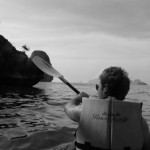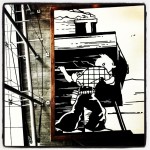
Do you know the top things to do in Barcelona?
Many bloggers have focused criticism on certain types of articles that they believe have been done to death. Produced over and over again.
The discussion has often been focused on articles such as “things to do in…” a city, place or country, with the point being made that it’s yet another article covering the same topic.
An overview of sights
I actually think these articles are a really good starting point for readers. They give a great general overview of the main sights to see in a place. Whilst these articles don’t need to go into huge amounts of detail, they don’t need to because if I am really interested in a certain aspect I can do more research – its beauty is in its simplicity.
Negative responses from travel bloggers on the lack of originality or creativity of these articles doesn’t really matter because our own target audience aren’t travel bloggers. When a average user searches for ” things to do in Barcelona” they will often find themselves on our website where we hope to supply them with a quick overview of some key sights. Users searching for this information don’t want a whimsical tail of how enchanting I found Barcelona. We are giving our readers what they want based on search terms and analytics data.
Digestible travel information
Of course we do also publish more feature diary entry articles but it should not be forgotten that articles such as “the top 10 things to do in…” serve a purpose if executed in the right manner. The article should be as useful as possible to the user without overloading them with information, this could include supplying links to other pieces of relevant content on and off your site. The focus should be on thinking how useful the piece of content would be for someone who have just discovered it by searching or clicking on the articles title.
The titles themselves are pretty basic but straight forward. Users searching via search engines are much more likely to search for “things to do in Barcelona” than “enchanting sights that I found in Spain’s second city” for example. Once they reach the page you don’t want to display a mass of text as it’s not as digestible as breaking the content into logical headings or a list of sights to see.
As heading text is also often used as the anchor text for links, having a descriptive an obvious heading is beneficial in terms of usability for those clicking upon links. Users then land on a page with relevant information rather than something they didn’t want to consume. It also helps in search engine terms as they attempt to understand via the anchor text what an article is all about, titling an article in a less descriptive (perhaps even print way) is less helpful for both users and search engines.
Focus on your audience
When I was away at the new year I used a basic, concise, helpful article on things to do in Burge. It did exactly what I wanted, it gave me a simple overview and starting point of sights to see. This is all I wanted from such an article, it proved useful and I’d definitely use the website again.
In my early blogging days I would blog about absolutely anything, but I soon realised that my audience were looking to consume something that was much more useful. This change in focus resulted in a much more successful and above all useful resource for my target audience.
Firstly define your audience and cater to their needs. Don’t just write for other bloggers unless that is your target audience, monitor you analytics and ensure you give your users what they want even if that is another ” things to do in..” article.
We’ve published many an article on things to do when traveling to different places, our list follows below. If you would like to submit an article on things to do in a city you have traveled to or even perhaps lived, please see our write for us section.
Things to see and do in Singapore
Photo by ctsnow






